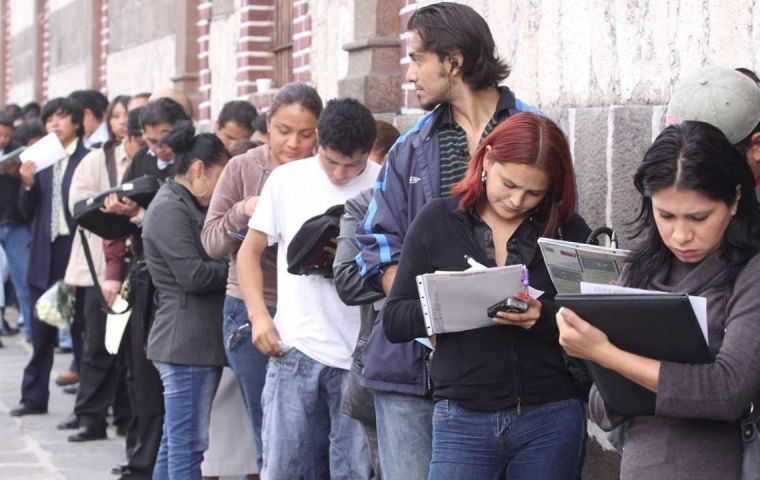MercoPress. South Atlantic News Agency
Unemployment falls in Argentina in 2Q, Indec says
 In the first six months of 2023, Argentina's Gross Domestic Product (GDP) accumulated an inter-annual drop of 1.9%, Indec found
In the first six months of 2023, Argentina's Gross Domestic Product (GDP) accumulated an inter-annual drop of 1.9%, Indec found Argentina's National Institute of Statistics and Census (Indec) released a report Wednesday showing that unemployment fell to 6.2% of the labor force in the second quarter of 2023, an improvement from the 6.9% recorded between January and March.
It is worth noting that Indec's sample only covers areas where 29.4 million people live and where only 900,000 people were found to be unemployed. The country's total population is about 46 million.
Indec also reported Wednesday that Argentina's economic activity contracted 4.9% year-on-year in the second quarter of 2023 as a result of the severe drought, which led to a 10% drop in exports, mainly due to a 40.2% drop in agriculture, livestock, hunting, and forestry, followed by fishing, which fell 30.5%.
Of the total 9.7 million workers, 36.8% are not registered, i.e. they do not pay pension or social security contributions. The inactive population - including children - reaches 15.4 million people (52.4%), while the EAP is 14 million (47.6%).
In the second quarter of 2023, the activity rate, which measures the economically active population (EAP) in relation to the total population, reached 47.6%; the employment rate (ER), which measures the proportion of employed people in relation to the total population, stood at 44.6%; and the unemployment rate (UR), which measures people who have no occupation, are available for work and are actively seeking employment, in relation to the EAP, was 6.2%.
Underemployment stood at 10.6%, while other employed persons seeking work and other employed persons not available for work together reached 11.0% of the EAP, the Indec document said.
The regions with the highest activity rates were the Pampa (49.2%), Greater Buenos Aires (47.6%) and Cuyo (47%). The region with the lowest activity rate was the Northeast (44.4%).
Locations with more than 500,000 inhabitants had an AT higher than those with less than 500,000 inhabitants (48% to 45.7%).
Among employed wage and salary workers, 4.5% used their own machinery/equipment to perform their jobs. Similarly, 9.1% of the total employed worked from home.
In terms of activity, the utility sector (electricity, gas, and water) contracted by 6.3%, transport and communications by 3.7%, financial services by 3% and manufacturing by 1%.
On the other hand, hotels and restaurants increased by 6.4%, mining and quarrying by 6.3%, education by 2.6%, and construction by 1.8%.
In the first six months of 2023, Argentina's gross domestic product (GDP) accumulated a year-on-year decline of 1.9%, Indec also found.
Exports fell 10.9% yoy and investments (gross fixed capital formation) fell 1.1%. Imports grew 4.3%.
Argentina's GDP is expected to fall by 2.5% or more this year by the International Monetary Fund (IMF), while the Economic Commission for Latin America and the Caribbean (ECLAC) forecasts a 3% decline, in line with private analysts consulted by the Central Bank of Argentina (BCRA).




Top Comments
Disclaimer & comment rulesCommenting for this story is now closed.
If you have a Facebook account, become a fan and comment on our Facebook Page!